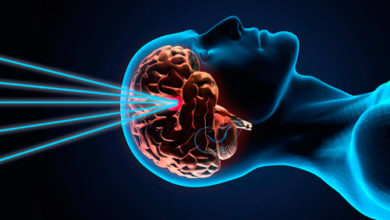Removal of pituitary adenoma through the nose
The content of the article
Often doctors, especially in Israeli clinics, perform removal of a pituitary adenoma through the nose as a minimally invasive operation if the endocrine system malfunctions and the pituitary gland in the brain ceases to function normally. An adenoma is a benign tumor that grows from glandular tissue, however, in advanced cases it can become malignant and metastasize. The most important thing for patients is not to start the process. If you suspect cancer, you should no longer put off contacting a doctor for diagnosis.
Indications and contraindications
Transnasal removal of a pituitary adenoma is prescribed in advanced conditions, when drug treatment is powerless and does not lead to positive results. The main advantage of performing surgery through the nose is complete visualization of the tumor body from all sides and the minimally invasive nature of the technique.
Unfortunately, despite the slow progression of the pathology, patients often present at a late stage, when:
- pituitary gland dysfunction is clearly expressed;
- there is a hormonal imbalance;
- There are unpleasant signs of the disease: atrophy of brain cells, severe headaches, sleep disturbances, fatigue, memory impairment, decreased concentration.
If a pituitary adenoma is suspected, patients are asked to undergo a full diagnosis, including the following examination methods:
- angiography;
- taking fluid from the spinal cord for study;
- CT, MRI ;
- radiography;
- o general blood test and hormone test .
Based on the results of a consultation of specialists and interpretation of instrumental examinations, an appropriate operation using an acceptable technique will be prescribed.
If a malignant tumor is detected, then endoscopic removal of the adenoma becomes ineffective. Doctors will select alternative and more effective methods of surgery - radiochemotherapy.
Methods
Removal of a pituitary adenoma directly through the nose is carried out using the following methods:
- transsphenoidal by inserting an endoscope into the incision under the upper lip;
- transseptal - insertion of the device through an opening in the nasal septum;
- transnasal - immersing the endoscope into the nasal cavity at the back.
Each of the operations is minimally invasive and is performed under general or local anesthesia. Duration takes no more than 3 hours. The technique is selected taking into account the location and size of the tumor. The procedure is performed transnasally when the adenoma is localized directly in the sella turcica or near it, but extending beyond the limits by no more than 25 mm.
In particular, when removing an adenoma, other alternative methods are applicable:
- plastic surgery;
- radio emission;
- cryodestruction.
The main thing is to prevent the adenoma from becoming a malignant neoplasm and the tumor growing in size. The space is quite limited at the location of the pituitary gland, and an increase in tumor size can lead to serious complications: injury to the optic nerve, malfunction of many systems and organs.
The essence of the transnasal method
Many modern clinics today have powerful automated equipment with lamps to ensure an almost 20-fold increase in the tumor body and the operated area. Thanks to the innovative method, it is possible to perform surgery to remove a pituitary adenoma through the nasal cavity, without opening the skull area. But the transanasal technique is effective in the presence of a small tumor, no more than 10 mm in diameter. It is a small tumor that can be quickly removed through the nose. With a strong increase in size, it is hardly possible to do without operating on the gland together with nearby tissues, so the operation often leads to dysfunction of the brain.
Taking into account the size of the tumor, it is possible to insert an endoscope into one or both nostrils at once, which significantly reduces the invasiveness of the procedure. To approach the sella turcica, specialists use a drill: they cut the septum and make holes in the front of the sinus. When the bottom of the sella turcica is clearly visible, trepanation of the tumor is performed, removing it in parts or all at once.
How is it carried out?
The operation is performed under anesthesia. Duration - no more than 3 hours. The flexibility of the endoscope allows you to make a hole in the upper walls of the sphenoid sinuses of the nose, thereby opening the dura mater and removing the tumor piece by piece. In case of severe bleeding, it is additionally stopped using electrocoagulation.
Thanks to the flexibility of the endoscope, it is possible to insert the tube into the nasal cavity at different angles for a more complete view of the cartilaginous septum and the opportunity for specialists to get as close as possible to the location of the tumor. The location of the adenoma directly above the sella turcica involves first, during the operation, separation of the tumor from the pituitary gland , then manipulation to lower the saddle down and, lastly, drilling holes in the bone tissue, removing the tumor-like body from the body, covering the place with synthetic materials or fixing it with a special bioglue.
What are the consequences?
If the tumor does not exceed 2 cm in size, then removal of the pituitary microadenoma does not lead to serious complications after surgery. In 90% of cases, complete recovery of patients and a return to a normal lifestyle is quite possible. Basically, the development of adenoma against the background of hormonal imbalance is inactive. But if you start the process, the tumor will begin to compress the brain structures and can lead to severe functional disorders:
- blurred vision;
- circulatory disorders in the brain;
- injury to nearby healthy tissues of the pituitary gland and endocrine glands;
- signs of acromegaly;
- problems with the reproductive system in women;
- thinning of nerve fibers;
- damage to the facial optic nerve;
- partial paralysis of the facial area;
- liquorrhea when cerebrospinal fluid leaves the body through the nose like a nasal one, when a fatal outcome is quite likely;
- memory impairment up to tissue necrosis;
- adrenal insufficiency with impaired water-salt balance;
- infection of tissues, development of meningitis, encephalitis as diseases that carry mortal danger;
- visual disorder, when patients are already classified as having a disability .
Endoscopy by administering the drug through the nose minimizes negative consequences, but like any other surgical intervention it does not pass without a trace. To minimize unpleasant consequences, additional neurosurgical and hormone replacement therapy may be prescribed. Usually, after surgery, patients are allowed to move independently within 24 hours. Nevertheless, you will have to stay in the hospital for a long time under the close supervision of doctors until the condition becomes satisfactory.
When the adenoma is localized in the lower medullary appendage, the recovery period is faster, the functionality of the pituitary gland is quickly restored, but constant monitoring by the attending physician is extremely necessary.
It is important after surgery, when the pituitary adenoma is removed, to follow certain rules and doctors’ recommendations:
- Do not use oral contraceptives for women;
- do not use certain vitamins and medications that can negatively affect hormonal levels;
- stop breastfeeding your baby;
- Be careful with homeopathy and herbal remedies, which can greatly harm the body; all home therapy methods should be discussed with your doctor.
It is unlikely that the pituitary gland of the brain will quickly recover after removal of the adenoma, so the rehabilitation period is not complete without additional treatment. According to reviews from many patients, the operation has to be performed more than once, since the tumor often begins to grow again after a short period of time. Of course, the operation does not go away without leaving a trace, it often recurs and leads to decreased vision in patients, since it involves surgical manipulations in the head area or removal of a pituitary adenoma. Consequences, relapses and complications occur frequently, including:
- severe bleeding;
- the development of meningitis, when recovery after removal of the pituitary gland becomes difficult.
Of course, each case after surgery is purely individual. Rehabilitation periods may vary. Endoscopy today is practiced by many doctors and has many advantages: it reduces the postoperative period and rehabilitation time. Today, removal of pituitary microadenoma in children using an endoscope is considered the gold standard, in particular among specialists in modern Israeli clinics. Endoscopy and laser therapy techniques are often combined. For example, radiology and exposure to radiation leads to a decrease in tumor size, a halt in its growth and a rapid onset of remission. Radiation therapy is carried out only when the malignant nature of the tumor appears.
Please rate the article:

 (7 ratings, average: 4,00 out of 5)
(7 ratings, average: 4,00 out of 5)



